I was lucky enough to sit down with Mantic CEO and Founder Ronnie Renton for a chat on all things Mantic, Games Workshop and, especially, Kings of War. This is Part One of the interview – and this part covers Mantic from beginnings to the current day – and into the future – and thanks hugely to Ronnie for his time and answers.
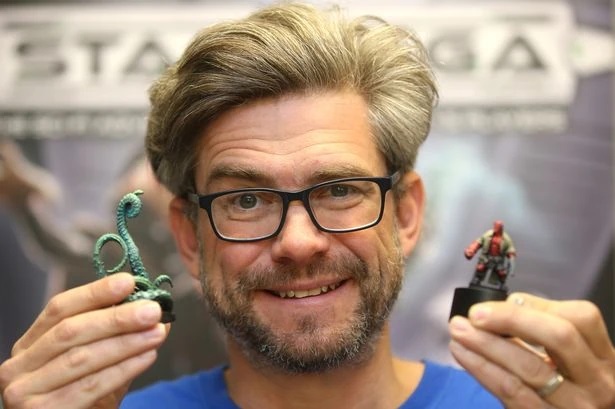
Aaron: What was the tabletop landscape like when you were thinking of starting Mantic in 2007/2008? What was it about it that made you think now’s the time?
Ronnie: I think the the direction of travel at that Games Workshop was going and was very obvious, you know, and it was literally I think the era different things was coming to an end after, you know, 20 years of innovation. Don’t forget, they used to sell chess sets in their stores in the 80s, you know. I thought that meant there was a world of opportunities to combine one of my passions, which was miniature gaming, with another which was all the geeky intellectual properties that I’d that I’d interacted with over the years.
How exactly the dial would fall between the two – or even building our own IP – I didn’t quite know, but I knew there were stories I wanted to tell, and other people’s stories I was happy to tell through the medium of miniatures. I think it was looking at it and saying “If I don’t do it now, I’m never going to do it”. I certainly had a view that I could do some things better than others – I thought we could appeal to people that perhaps had got lost along the way, and I thought new IP’s would bring people in that had never seen Wargaming.

Aaron: So that was the plan for the early years at Mantic?
Ronnie: Yeah, we aimed to develop our own IP and pick up some IPs that will pull people in. Then it was about getting started – Let’s get some sales channels, let’s get some competencies inside the business. For rules and sculpts, well I had a I decent black book and in Nottingham, you’ve got a lot of talent, so for writing rules and making sculpts we were ok from day one. I thought, let’s get Bob Naismith, let’s get sculpting some miniatures and let’s start with elves.

We did Elves and they were partly to be used in Warhammer games as a fun, funky, plastic alternative. But my Elves were purposely never made to look exactly like Games Workshop – we won’t do rip-offs. We were always creating another world, a different way of doing it, but the miniatures could be used in lots of different places, like our zombies. I’ve seen lots of zombies, and there’s lots of choices for them –
Aaron: I’ve got some, it’s a nice kit!

Ronnie: We made great models, great sculpts and, at the end of the day, they’re a zombie, you know? Not long after we started writing the rules for Kings of War, initially as a free giveaway. You could pick it up and start playing right away, start learning the rules – and it’s a great set of rules. Alessio [ed: Cavatore] wrote that, and he’d written Warhammer, Lord of the Rings, Mordheim, so he knew what he was doing. He was an experienced miniature game designer by this point and wrote a great set of rules. Once we had that, we were going and it grew from there.
Aaron: And then Kings of War started to get really big
Ronnie: Big might be wrong, but it did get traction. You know, there was only five or six of us and we were designing the Basileans and the Abyss and we started to build a story. Mike McVeigh was our sculpting manager, Alessio our rules writer and we were creating a pretty cool IP.
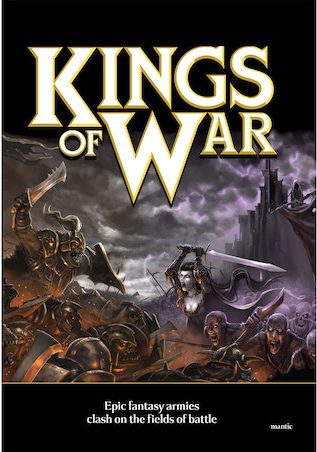
You know, we were starting on a kind of journey here and then this funny little thing called Kickstarter came along and everything changed for good and for bad.
We’d just written the Kings of War rulebook and we’re about to take it to print. We’re about half way through making Dreadball, which was a phenomenal game, beautiful sculpts, excellent gameplay, superb gameplay. It was very fast, very good fun, and I thought “you know what that be great on Kickstarter”. There were going to be two basic teams in plastic and the rest was going to be in metal.
We put Kings of War up on Kickstarter, and we thought it’d do about £30,000 – and it did £350,000. Brilliant! We’ve got all this money! But we promised so many things for it – and we had to get everything sculpted, and we had this cavalry unit and that cavalry unit and we hadn’t thought about the tooling – it was crazy, slightly out of control, fun.
And then we did Dreadball. That did $750,000 and we were at the races.
[Aaron note – If you weren’t in the hobby in 2012, you missed out on the insane buzz that Dreadball created while on Kickstarter. It might not have been the first tabletop minis game to smash through too many stretch goals than might have been sensible, but it was certainly one of the earliest]

We were well up and running, and the next few years was more Kings of War, Warpath, Deadzone and a big, successful range of Scifi terrain – there’s no better terrain set out there. We were laying down tooling that was going to be with us for a long time, and then we get a phone call from Topps that said “do you want to have a Mars Attacks Licence?” and we said “Yeah, Alright”.
We had a lot of ideas and we were blitzing through them, but we’d always thought we were going to do licenses, so we did Mars Attacks. It had a good Kickstarter [ed: $550,000], but as a game it was neither a proper war game, nor was it a board game. It could have been hilarious and very good fun, but it was quite a hard war game with a kind of thin veneer of fun layered over. Great setup and a real giggle, but it wouldn’t have the compelling nature of Deadzone, nor the lighthearted fun of a of a game you could set up and play in an hour.
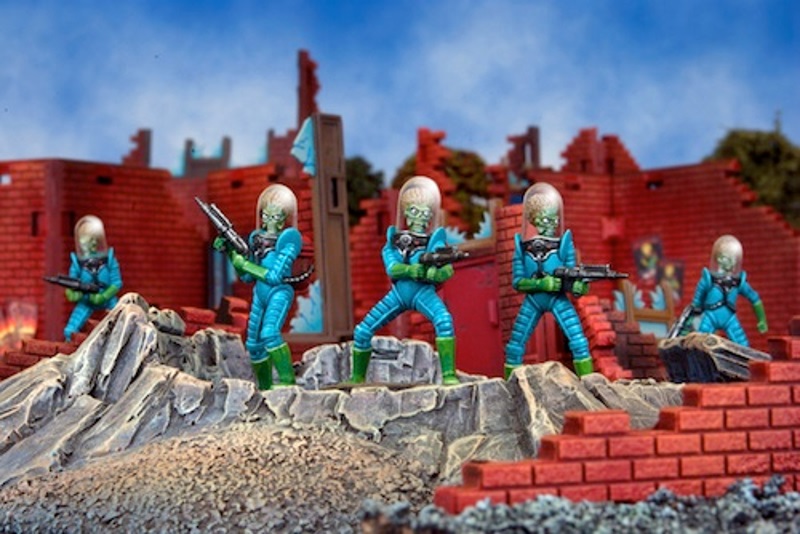
Mars Attacks opened the door to licenses, and then I realized if we were going to do it, we’d better get on and do it, so I got on a plane, flew to LA and met Shawn Kirkham at Skybound, who had the license for The Walking Dead.
You know, The Walking Dead was big at the time – huge. The TV show was going crazy and we had the comic license and the characters were very similar. So we sculpt it, launched a wonderful Kickstarter and also a wonderful trade launch going absolutely like the clappers we had it translated into French, Spanish, Italian, Taiwanese and so it had gone very big and was very exciting.
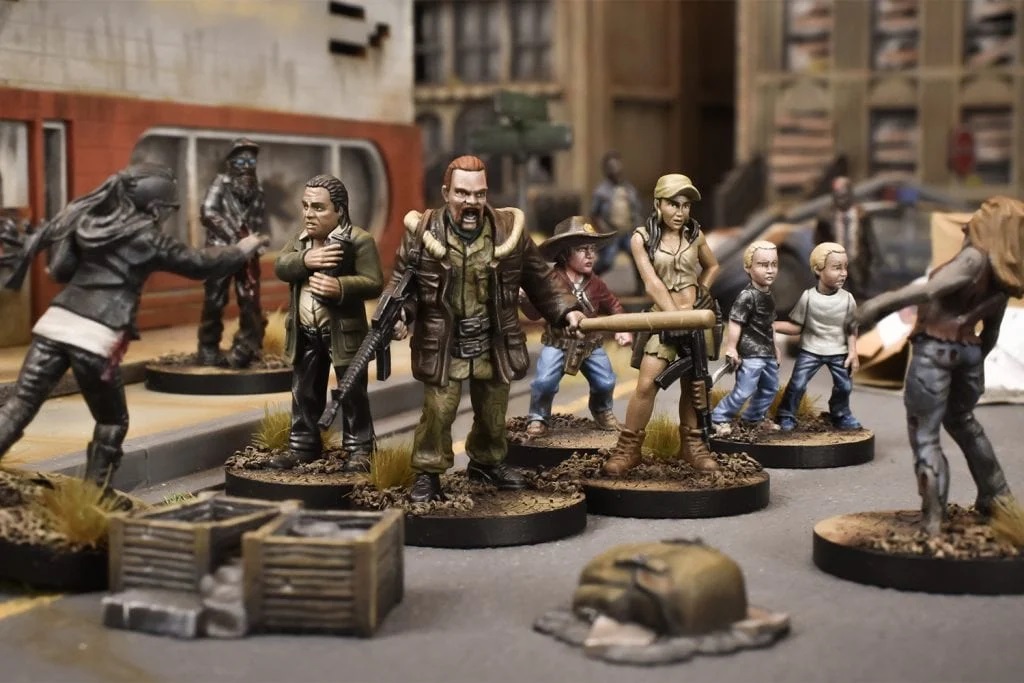
And then the TV series crashed and literally overnight, and the impact on sales was like nothing I’d ever seen. It just wasn’t cool anymore, and it stopped selling.
We left it for a year or two and cracked on with Kings of War, which was hugely successful and did very well. But people came back to Walking Dead and the people that loved it really loved it. The retail angle was gone, but online sales were there and so we did Kingdom and Whisperers and it did live on.
Our next big one was Hellboy. We made that more traditional board game, you know, The Walking Dead was still a war game – a skirmish game, but still a wargame. Hellboy was a proper Dungeon Crawler whodunit where you don’t know who you’re fighting till the end. It has a map that lays itself out, it’s a lot of cooperative fun, very well designed by James Hewitt and the team and has that Mignola style. Really, really nice stuff.
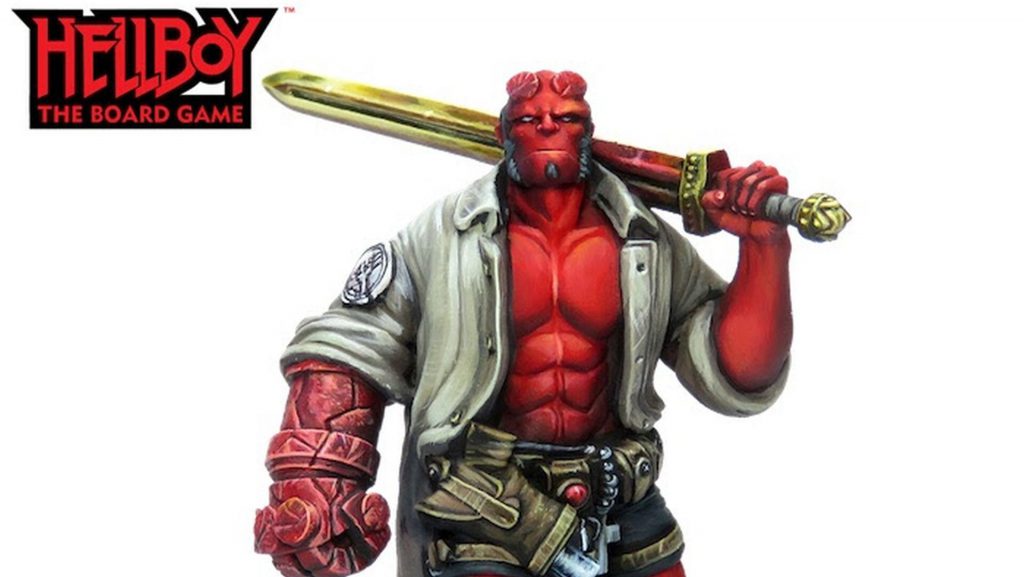
And then we kind of bring ourselves up to modern day. Well, we had a little pandemic in the middle of it, and we’re going along with Terrain crate – I’ve got a bit of a terrain fetish, you know?
Aaron: That really comes across – I was going through your site and the wayback machine for Mantic and it’s the models there front and centre, but you always make sure there’s plenty of terrain in shot too
Ronnie: Set dressing, they call it. The finest moment of any war game for me is when you set up the beautiful table, everything is painted and laid out and then you just get down to eye height… the drum sounds in your head, you can hear the armour and the sound of an army rolling forward to the front of the tree line and taking up position. Then you think, OK, today’s a day. Let’s do it.
Aaron: That kind of taps into, I think a bit of a wider discussion going on in tabletop games at the moment where you have people who play for those moments, who play for the evocative feeling.
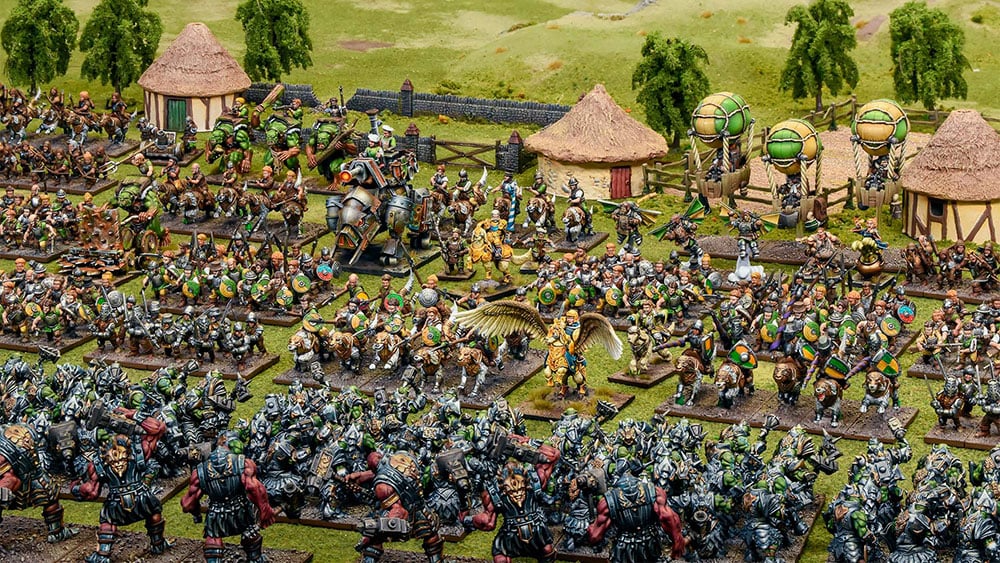
Ronnie: Yes, that I’m there, I’m the general, you line up the army on the terrain and go, and then there’s a different philosophy, not an opposing philosophy, but it’s a slightly different one, where you’re saying this is a game, and I want these things to be very, very predictable, like chess. I like my games to be chaos and cinematic moments, but that doesn’t create a good game experience for most people most of the time.
So you needed degree of predictability – for example, my favorite game is not chess, it’s backgammon. You can practice it, and have strategy, and become very good at it, but it’s got chaos, it’s not entirely predictable. It’s simple and it’s fast and it’s got clarity – whatever is on the dice, that’s what you move. You’ve got probabilities that sits around the center, but they don’t define the game.
I think that’s probably why the Mantic games are really becoming very popular, because we focus on we let the dice give you the unpredictability but it’s all built on a very reliable engine and then we put what we call layers on top, things like command dice.

So these allows your heroes to be more heroic your soldiers to be just a little bit better in that moment that you need them to be, but with the unpredictable element.
Aaron: Chance with a resource management element as well.
Ronnie: Yeah, things like command dice let you do things, let you nudge probability but our philosophy is that it shouldn’t be super reliable and it’s never game winning. It can have a very positive impact in your game, so you’re looking for those moments, the key attack roll, and you know your command dice will help you. But they’re not going to kill everything on the other side. You won’t always get the sniper shot, you won’t be able to move the hill on top of their unit.
Aaron: I do miss.. what was it? Assault of Stone?
Ronnie: Yeah, that kind of thing. What’s your strategy for this whole battle?
“I’m gonna hide my wizard and I’ve got five chances to move the hill and if I get to move the hill at least twice, I will win” OK.
That’s not strategy. So we try to balance these very cinematic moments that the more visceral players love with the reliability and a degree of predictability the tournament players love and they both have to have at least some of 1 foot in the other camp, and I think that’s why our games are getting a reputation for being the kind of best games out there.
And that they’re two hours.
Aaron: What do you mean?
Ronnie: They’re two hours. Get to the pub or club, set up, play, pack away in time for last orders. You will get a Kings of War 2200 point battle in two hours, comfortably arrive at 7:30, done by nine and packed away.
Aaron: I’m thinking about Armada here, a shorter game that’s a 1-2 hour experience and it’s really satisfying. You’re not going to sit there and go “it’s ten pm, we’re on turn three”

Ronnie: Yeah, exactly. We want you to be able to play a satisfying game – when you spend ages painting it and lots of money doing it, you should be able to play. You know, there’s games – and I won’t mention any names – where people have set up their army and the opponent said “I’ve got rock. You’ve got scissors” and there’s just no point playing further. A very good tournament player can just talk you through what they’ll do in those games and there’s nothing you can do.
We don’t make games like that, you know? You can’t do it. Firstly, no one wants to turn up and be the person who can’t do anything, and then it’s just a terrible experience. We play games where well, you keep playing – you might get your bottom smacked, but you’re going to have some moments too.
Aaron: I play very badly, so most games are quick experiences, yeah.
Ronnie: Yeah I do too. I do the whole set up, it looks great, it looks brilliant and then Oh Shit, I put my big slow thing in front of my fast units. There’s not enough space to get through there. That disrupts. Oh well, whatever, it looks fun. I’ll roll some dice. I’ll drink some beer. I’ll just take some units off at appropriate times but if you know you’re still gonna have a few opportunities to put a few punches on them. You can still try and fight your way out of it – there’s nothing too [overpowered]. “This kills that now you can’t kill me” there’s none of that.
We like the challenge to be strategic – if you let cavalry get behind your lines and attack you from the rear or flying things take out all your warmachines, it’s gonna hurt.
Aaron: Yeah the threat is in the gameplay right, as you say with the cavalry. If you get the rear charge off, the threat is massive, but it’s the it’s a strategic threat because it’s a predictable, positioning one.
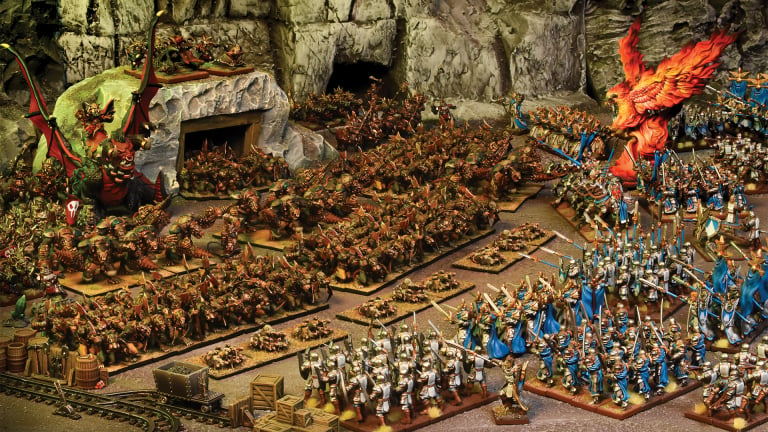
Ronnie: Right, they’re gonna move around, it’ll take some time. How are you gonna deal with it? You know, don’t leave your flanks exposed. And so, you know, military history was my degree. So we try and reflect those 600 years of war history in the games we make, and then, you know, theme it out with a bit of dwarf or a bit of goblin action.
Aaron: So are you are you much of a Historicals player?
Ronnie: Not really, I started there as a kid, fantasy miniatures didn’t really exist when I was young, so it was Napoleonics arifix 1:72 and a three page photocopied rule set. It was dead simple like even I can understand it and I was at the age where you just didn’t give a damn. Then we got to tanks and then some guy went down to the toy shop and bought Jeeps with these guns on top. They’re hot wheel type things and he said they were 75 mil guns and so basically he was just running around blowing all the tanks up, zipping all over the place so he didn’t last long – He’s now buried under the school assembly hall.
And then then we discovered Warhammer and the rest, as they say, was history.
Aaron: That sounds like a familiar trajectory, yeah
[We then talked about what we were painting for a while – Ronnie was working on some 3D printed Mantic Dwarves, and so….]
Aaron: I did want to quickly ask about the Abyssal Dwarves, actually because there was a point I remember they were absolutely everywhere – a gap that was nice and obvious in other ranges for a long time [I’m talking about Chaos Dwarf armies here!] – and still is!
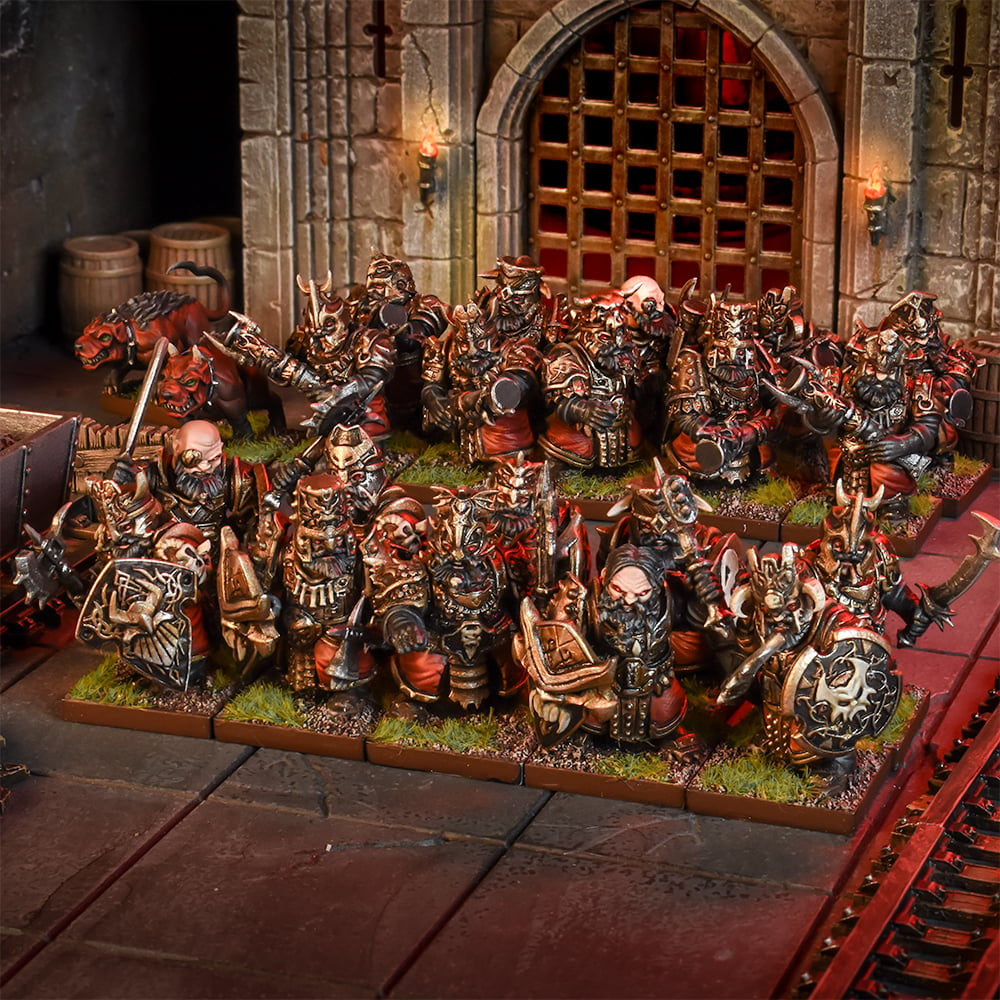
Ronnie: Yeah, so on the Dwarf thing, I never quite got on with the top hat thing, you know, back from back in the day. I always thought it was slightly too much and I think the joy of when I started playing fantasy gaming was that I wanted to be in the world, and anything that broke the fourth wall was too much. I loved the humour, I could see goblins doing stupid things, but there was always that element of realism that I thought was important to my style of fantasy gaming.
Pannithor and you know, the Warpath universe both have a few kind of slightly chilling aspects to them – the goodies are good and the baddies are bad, but then we start twisting the goodies. Sometimes they’re good, sometimes bad and sometimes the baddies are just a bit naughty rather than bad. You can play into those tropes and enjoy them.
I think we’ve done it so far with two armies and we just had to do with the third. With the Abyssal Dwarves, I think we took the dwarfs and took them very seriously as an army and said look, let’s do them properly. Now, you know, they’re my favourite models.
[Ronnie holds up an Abyssal Dwarf Hellfane]
This is gorgeous. It’s a gorgeous model and it’s another classic that for us to cast in resin it should be £100 and we can’t charge 100, so we charge 60. It’s 16 moulds that last about three shots each and then we have to remake the mold, so hence it was in my office.

And this is the real deal, he’s a bad dwarf, he’s going to do what he wants to do, and destroy you doing it.
You know the Halfling Army that we did? I said I want to make them really serious. Effective fighters, slingers, riding dogs running around breaking your line, making you look left and right at speed. We’ve got snipers, we’ve got air support, we made it a real army.
We’re still working, dipping into things like the Dwarfs and the Halflings and the Twilight Kin, and making our own stories and slowly but surely they get more resonance, the world becomes richer.
We have more books, we have more global campaigns and what happens in that global campaign will be in the history books. The world will change.
Aaron: How do you manage that? There’s so many times I’ve seen global campaigns and they get to a point and say “ok we’ve had our fun” and everything goes back in the box, we’ve got a product line to maintain.
Ronnie: We do it with micro-world-changing events, with changing how the story plays out. In the Warpath Universe, there’s a billion dark planets out there so we can just blow them up. That’s no problem and I don’t need to wipe ranges out, particularly once we’ve sculpted them. In Pannithor, well, it’s a big world – the Basileans are a huge empire of hundreds of thousands of, you know, millions of people.
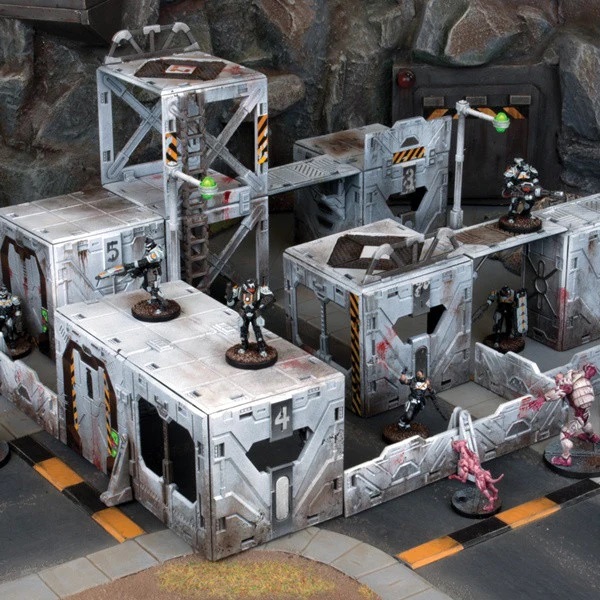
Story builds story, we can say “that’s what will happen” and then you decide if it stays that way or if it steers another way then something bad will happen. So it builds – we’ve gone to the Abyss and the Void, next year might be the planet fighting back.
So the narratives will just keep moving and the more bad stuff that happens the probably the harder it is to keep happening because more and more forces will come against them. Watch this space, cool things happening.
Aaron: The very last thing I wanted to ask about before I give you back your Friday is about the Mantic Vault. You’re one of the first big, established mini companies to make the jump into STLS, and that’s an interesting place to be.
Ronnie:
So what we’ve done, we’ve tried it out and I said very early on we had to do it properly or not at all. You can’t just [puts hands on his head] go La La La La La La La La La La it doesn’t exist. It does. You need to do it properly.

We had the rules and the companion for the gamers, so you could access all the rules, infinite army lists, all the updates – never need to buy another book – for a subscription. Its 5.99 a month for everything, that’s all the rules, list builders and features. For a couple of quid more you can get the vault, which gives you loads of models.
For something like Armada, you can pick up a subscription, you’ve got the rules, you go and print off the models and you’re ready. For Mantic it’s more complicated, because Armada ships are hand cast resin, so
We have to handcast it.
We have to make sure it’s not broken.
It’s broken.
It just goes in the bin, you know, if the one cannons come off, we put it in a bag.
We put a bag in a box.
We put the box in another box.
We put the box in an outer box.
We ship it to a gaming store.
The gaming store unpacks it.
Still got to be unbroken.
Store unpacks, it puts it on its shelf, and maybe you want that fleet somewhere where you are on the outskirts of Pittsburgh. Or maybe it doesn’t sell.
Or you can go online. Pick which fleet you’re playing. Download it, start playing it and then go to your mate. That’s brilliant. Game called Armada – Do you wanna play it and what fleet do you want?

Aaron: It is really good game, I really enjoyed playing it.
Ronnie: Thank you. I’m glad you did.
We’ve been able to to create a win win here where we’re saying here’s a brand new game, not a couple of years old. We love it. It’s probably had its day in the sun in retail. You know, it’s if you’re going to put 40k or Armada on your shelf, you’re going to pick 40K? So here we have a different way to get people playing it and a different way to sell it.
It’s important as well, because you’re not playing with the dodgy knockoff version for someone else’s game. If you’re playing Armada, you’re playing Armada with the rules and the models.
So yeah, with he Vault we’ve embraced it, we’re having fun with it. We’re learning all the time. It seems to be making people happy, which is good, and we’ll see where it goes. Where it goes, I don’t know, but we’ve embraced it and we’ve started on it.
Aaron: I think it could be a good model for some of those games that, as you say, had their moment in retail. Previously they vanished completely.
Ronnie: Yeah it gives them a second lease of life. It’s there and you can play it whenever you and your gang want to pick it up. Hypothetically if you’re trying to find that in two years time in Bristol, you know, you have to come to our website, and maybe we haven’t made models for it and then it’s not available. This way you can still play it.
So very excited about where the Vault could take us. Thank you for giving me a chance to talk about it. We’re not going to be pulling our plastic sprues. You know, I for one still find a little bit brittle and I’m too clumsy for it and we’ve invested in the sprues – use them to build your core army out of, with STLs for heroes.
Aaron: Ronnie, thanks massively for your time, it’s been a pleasure!
A really epic chat – and as an editorial note I’d like to thank Ronnie for doing most of it twice after my oh-so-clever way of recording just captured me mumbling into my microphone and none of his part of it! Sorry Ronnie and thanks again! If you’d like to look more into Mantic games, guess what? Goonhammer has you covered – Kings of War is a firm favourite, and look out for more on Armada, Deadzone, Firefight and Terrain Crate soon!


